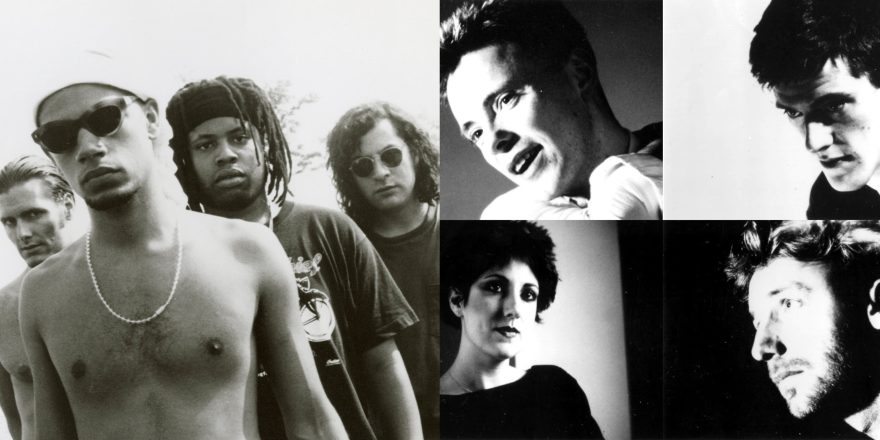I remember really distinctly my first time hearing Elliott Smith. I was 16 years old, sitting on a bottom bunk bed at summer camp, when my friend lent me the headphones of their iPod Nano to show me Elliott’s cover of “Trouble” by Cat Stevens. Upon returning home, I discovered Either/Or, and ended up spending my entire junior year of high school down the rabbit hole.
There are a handful of songs throughout my life that have hit me so hard that I can’t help but remember the exact moment I first heard them — what I was wearing, how I was sitting, how the light looked in the room. My first listen to “Between the Bars” was one of those core memories. I remember just sobbing on my twin bed. My feelings of angst were encapsulated by Elliott’s voice in a way that I couldn’t express with words, by just the sound of that song. There was a deep loneliness, regret, sorrow he always seemed to tap into — in his rhythm, his lyrics, his riffs, and in his vocal tone — which, while admittedly whiny at times, never quite felt that way. Elliott just had this way of embodying an emotion in all aspects of the music. After Either/Or, I discovered XO and Figure 8, and the obsession quickly evolved into a phase of covering Elliott’s music, and learning about songwriting through his phrasing and his chord progressions.
People don’t think of him as an Americana artist, likely because he fell so into the indie world, but as someone who’s more of an Americana artist and a student of the style, I personally don’t think his influence on the genre is talked about enough. In his writing, he often has this really classic folk form with an Americana thread in it that reminds me of Lucinda Williams — carrying on the tradition of a story song with a clear refrain line and straightforward form, but with a punk-slash-indie aesthetic.
I was always really taken with Elliott’s style from the beginning, as it felt so singular and so safe, like he was welcoming you into his world. Vocally, I was so entranced by his tone and his double tracked vocals — the way he’d let the humanity of each take play off of each other — that texture was always so delicate and inviting. And instrumentally, he had this way of embodying a whole rock ensemble with just an acoustic guitar, he had this jangly thing going on with the way he’d sing and play his Yamaha dreadnought in recordings. Coming from a passion for old-time boom-chuck guitar rhythm, I was taken with the way that he could meld folk styles with his unique harmonic and melodic choices — including his frequent use of borrowed chords, which often reminded me of the Beatles. Whether he was fingerpicking ornately on a tune like “Angeles,” or rhythmically driving forward with alternating bass on cowboy chords like on “Waltz #2 (XO),” he could make it all sound so seamless and natural. I think Elliott and Patty Griffin, though very different from one another, have been some of the biggest influences on my guitar playing, in terms of being a solo singer-songwriter, just with the way they can create a whole world, or emulate a whole band, with only an acoustic guitar and a voice.
My love for his music definitely feels different now that I’m in the trenches of this career myself. It was more of an emotional connection when I was listening to him in high school, but now as an adult and someone who’s more in the practice of recording, I would say that his process is what’s most interesting to me. I’m inspired by the knowledge that Elliott self-recorded a lot, utilizing a TASCAM portastudio cassette recorder (a machine I’ve come to know and love), and by learning that he would often play all of the instruments on his songs; whether it was drums or piano or bass, he’d flesh out the whole vision himself. That’s something that I’ve only started doing in the last few years, but this record that I’m about to put out, Deep Feeler, partly was demoed on TASCAM in a sweet, pure, janky-DIY way.
On Deep Feeler, while maybe melodically my stuff derives a little more from folk, I think my guitar work was super influenced by Elliott. Learning songs like “Waltz #2 (XO)” when I was 16, with its waltz-y alternating bass magic — I feel like you can hear that direct influence in “Made It Mine Too.”
And in terms of songwriting, I would say “Katie” is a moment of levity on the album that reminds me of “Say Yes” on Either/Or. It’s a “morning after” song. As perhaps a heavier artist like Elliott in terms of subject matter or general vibe of the bulk of my songs, I feel like the sweetness of “Katie” is kind of parallel, with its levity and the song’s role in the whole picture of a record, to “Say Yes.” You have to have those lighter moments, even if they’re extremely rare.
Throughout my life, Elliott will continue to be an influence, and I’m so grateful for his songs. I am enamored by the way he could take whatever instruments he had, and as a songwriter, let the thing bloom in his own hands, whether or not he was the best drummer or the best bassist. He just let the song guide the production. I wish more people were like that.
As told to Annie Fell.
(Photo Credit: left, Joseph Ross Smith)




